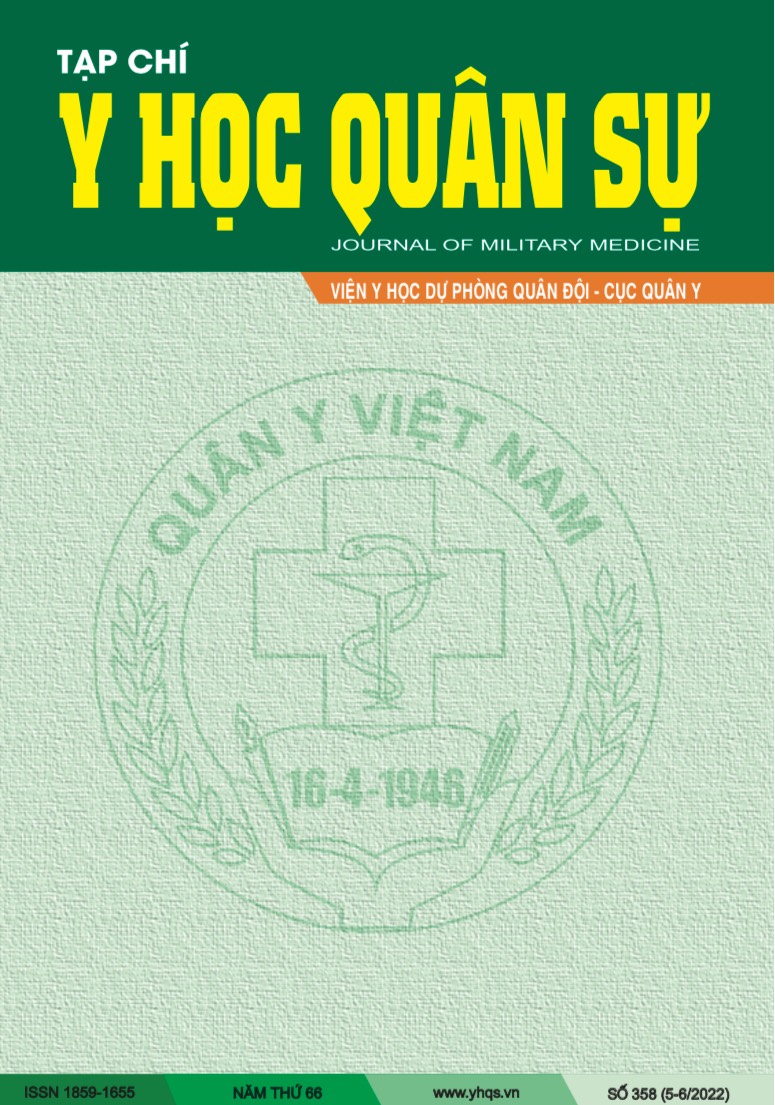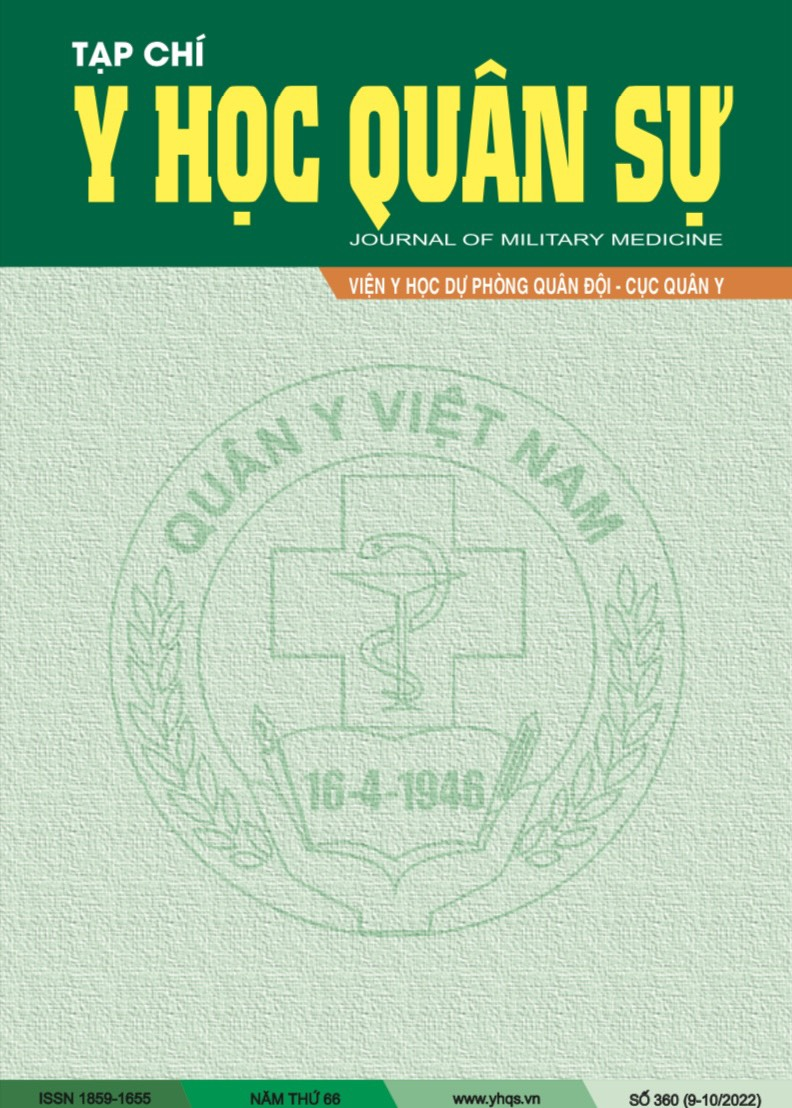TỔNG QUAN BỆNH VIÊM GAN CẤP TÍNH KHÔNG RÕ NGUYÊN NHÂN Ở TRẺ EM
Tóm tắt
Nổi lên từ đầu tháng 4/2022, bệnh viêm gan cấp tính không rõ nguyên nhân ở trẻ em, kể cả ở các trẻ có tiền sử khỏe mạnh, đã dấy lên mối lo ngại y tế trên toàn cầu. Từ đó đến nay, số ca bệnh được ghi nhận tiếp tục gia tăng và mở rộng phạm vi ra nhiều quốc gia, vùng lãnh thổ trên toàn thế giới. Đến nay, tuy đã có nhiều nỗ lực toàn cầu trong nghiên cứu nhằm xác định căn nguyên bệnh, nhưng những hiểu biết về bệnh vẫn còn hạn chế. Đến hết tháng 6/2022, Việt Nam chưa ghi nhận ca bệnh viêm gan cấp tính không rõ nguyên nhân ở trẻ em nào, song vẫn tiềm ẩn nhiều nguy cơ lây nhiễm căn bệnh này vào trong nước. Điều này đòi hỏi cần phải nâng cao nhận thức và cảnh giác về bệnh viêm gan cấp tính không rõ nguyên nhân ở trẻ em. Bài báo này cung cấp góc nhìn tổng quan hiện tại về bệnh và một số biện pháp trong giám sát, sàng lọc, dự phòng và điều trị viêm gan cấp tính không rõ nguyên nhân ở trẻ em.
Tài liệu tham khảo
World Health Organization, Acute hepatitis of unknown aetiology - the United Kingdom of Great Britain and Northern Ireland. 2022; Available from: https://www.who.int/emergencies/ disease-out- break-news/item/2022-DON368.
Bongiovanni M, Zago T (2021), Acute hepati- tis caused by asymptomatic COVID-19 infection. J Infect, 2021. 82(1): p. e25-e26.
Cevik M, et al. (2022), Acute hepatitis of un- known origin in children. BMJ, 2022. 377: p. o1197.
de Kleine R.H, et al. (2022), Severe acute hepatitis and acute liver failure of unknown origin in children: a questionnaire-based study within 34 paediatric liver centres in 22 European countries and Israel, April 2022. Euro Surveillance: Bulle- tin Europeen sur les Maladies Transmissibles = European Communicable Disease Bulletin, 2022. 27(19).
Hakim M.S (2022), The recent outbreak of acute and severe hepatitis of unknown etiology in children: A possible role of human adenovirus infec- tion? Journal of Medical Virology, 2022. 16: p. 16.
Khan Y.H, et al. (2022), Outbreak of acute hepatitis of unknown etiology in children: The crit- ical role of healthcare professionals in neutralizing misleading narratives during the COVID-19 pan- demic. Journal of Medical Virology, 2022. 29: p. 29.
Mohapatra R.K, et al. (2022), Emerging cases of acute hepatitis of unknown origin in children amid the ongoing COVID-19 pandemic: Needs attention - Correspondence. International Journal Of Surgery, 2022: p. 106682.
Mucke M.M, Zeuzem S (2022), The recent outbreak of acute severe hepatitis in children of unknown origin - what is known so far. Journal of Hepatology, 2022. 06: p. 06.
Bộ Y tế (2022), Công văn số 2480/BYT-DP về việc giám sát các trường hợp viêm gan cấp không rõ nguyên nhân ở trẻ em, 13/05/2022.
World Health Organization (2022), Acute hep- atitis of unknown aetiology in children - Multi-coun- try. 2022; Available from: https://www.who.int/emer- gencies/disease-outbreak-news/item/DON-389.
UK Health Security Agency (2022), Investiga- tion into acute hepatitis of unknown aetiology in chil- dren in England - Technical briefing 3. 19/5/2022.
Fox J.P, Hall C.E, Cooney M.K (1997), The Seattle Virus Watch. VII. Observations of adeno- virus infections. Am J Epidemiol, 1977. 105(4): p. 362-86.
Ison M.G (2006), Adenovirus infections in transplant recipients. Clin Infect Dis, 2006. 43(3): p. 331-9. 14. Pscheidt V.M, et al. (2021), Epidemiology of human adenovirus associated with respiratory infection in southern Brazil. Rev Med Virol, 2021. 31(4): p. e2189.
Lynch J.P, Kajon A.E (2016), Adenovirus: Epidemiology, Global Spread of Novel Serotypes, and Advances in Treatment and Prevention. Semin Respir Crit Care Med, 2016. 37(4): p. 586-602.
Gu J, et al. (2021), Adenovirus diseases: a systematic review and meta-analysis of 228 case reports. Infection, 2021. 49(1): p. 1-13.
Ronchi A, et al. (2014), Neonatal adenoviral infection: a seventeen year experience and review of the literature. J Pediatr, 2014. 164(3): p. 529-35 e1-4.
Gonzalez-Vicent M, et al. (2019), Current practices in the management of adenovirus infec- tion in allogeneic hematopoietic stem cell trans- plant recipients in Europe: The AdVance study. Eur J Haematol, 2019. 102(3): p. 210-217.
Ronan B.A, et al. (2014), Fulminant hepatitis due to human adenovirus. Infection, 2014. 42(1): p. 105-111.
Khalifa A, Andreias L, Velpari S (2022), Ad- enovirus Hepatitis in Immunocompetent Adults. J Investig Med High Impact Case Rep, 2022. 10: p. 23247096221079192.
Matoq A, Salahuddin A (2016), Acute Hepa- titis and Pancytopenia in Healthy Infant with Adeno- virus. Case Rep Pediatr, 2016. 2016: p. 8648190.
Hosnut F.O, et al. (2008), Adenovirus in- fection as possible cause of acute liver failure in a healthy child: A case report. Turkish Journal of Gastroenterology, 2008. 19(4): p. 281-283.
Peled N, et al. (2004), Adenovirus infection in hospitalized immunocompetent children. Clin Pediatr (Phila), 2004. 43(3): p. 223-9.
Patterson J, et al. (2020), Systematic review of the global epidemiology of viral-induced acute liver failure. BMJ Open, 2020. 10(7): p. e037473.
Munoz F.M, Piedra P.A, Demmler G.J (1998), Disseminated adenovirus disease in immunocom- promised and immunocompetent children. Clin In- fect Dis, 1998. 27(5): p. 1194-200.
Baker J.M, et al. (2022), Acute Hepatitis and Adenovirus Infection Among Children - Alabama, October 2021-February 2022. Mmwr-Morbidity and Mortality Weekly Report, 2022. 71(18): p. 638-640.
Groves H.E, et al. (2021), The impact of the COVID-19 pandemic on influenza, respiratory syn- cytial virus, and other seasonal respiratory virus circulation in Canada: A population-based study. Lancet Reg Health Am, 2021. 1: p. 100015.
Olsen S.J, et al. (2021), Changes in influ- enza and other respiratory virus activity during the COVID-19 pandemic-United States, 2020-2021. Am J Transplant, 2021. 21(10): p. 3481-3486.
Williams T.C, et al. (2021), Transmission of paediatric respiratory syncytial virus and influenza in the wake of the COVID-19 pandemic. Euro Sur- veill, 2021. 26(29).
Brodin P, Arditi M (2022), Severe acute hep- atitis in children: investigate SARS-CoV-2 superan- tigens. Lancet Gastroenterol Hepatol, 2022.
Wanner N, et al. (2022), Molecular conse- quences of SARS-CoV-2 liver tropism. Nat Metab, 2022. 4(3): p. 310-319.
Osborn J, Szabo S, Peters A.L (2022), Pedi- atric Acute Liver Failure Due to Type 2 Autoimmune Hepatitis Associated With SARS-CoV-2 Infection: A Case Report. JPGN Rep, 2022. 3(2): p. e204.
Xu L, et al. (2020), Liver injury during highly pathogenic human coronavirus infections. Liver Int, 2020. 40(5): p. 998-1004.
Striha M, et al. (2021), Rapid review of mul- tisystem inflammatory syndrome in paediatrics: What we know one year later. Can Commun Dis Rep, 2021. 47(11): p. 466-472.
Ratho R.K, et al. (2022), COVID-19 Asso- ciated Hepatitis in Children (CAH-C) during the second wave of SARS-CoV-2 infections in Central India: Is it a complication or transient phenomenon. medRxiv (preprint), 2022.
Antala S, et al. (2022), Severe Hepatitis in Pediatric Coronavirus Disease 2019. J Pediatr Gastroenterol Nutr, 2022. 74(5): p. 631-635. 37. Perez A, et al. (2021), Liver involvement in children with SARS-COV-2 infection: Two distinct clinical phenotypes caused by the same virus. Liver Int, 2021. 41(9): p. 2068-2075



